One of my favorite projects from 2024 was designing a set of fabrics for my local yarn shop friends Aimee & Carly at Darn Knit Anyway. The shop celebrated its 15th birthday last year and I’ve known them since before the shop was even a twinkle in their eyes. I thought it would be fun to talk a little bit about the process that goes on behind the scenes to make these fabrics come to life.
We started by talking about what the fabric should be. I gave them a list of adjectives so that we could kind of choose the style they were going for and they came back with “branded, playful and maximalism”. Since they are primarily a yarn shop, they really wanted to incorporate sheep into the design somehow and I really wanted to do it in a way that it wasn’t just a design that screamed “we’re a yarn shop”. We also talked about what they wanted to do with the fabric after it was printed so I could get an idea of the scale. Designing for something that’s going to be curtains vs small project bags are two very different fabrics.

Branded to me meant that we needed to use their brand colors, which happens to be a palette that I LOVE. The challenging thing about this palette is that they are all a very similar value so there’s not a really strong variation in light and dark. But fortunately, sheep are really classic to make in black and white so I decided to try and balance the black and white with the colors.
You’ll notice my photo up above is paper, pen and pencil. I do not draw my designs on an iPad or use Procreate. I like to make paper art as the starting point. So these started as many sketches on paper. I don’t use a lot of special art tools. I drew these on copy paper and inked them with my favorite Uniball pen and a plain old sharpie. Why do I work this way? I really like the quality of the lines and the art better. As I watch videos of other artists drawing with tools like Procreate that “correct” your lines and “perfect” your circles as you go, I just looks boring to me. No shade to those of you that love drawing with those tools! It’s just not my style.
I decided that one way to make the design a little playful was to try to “hide” the sheep in the design. I didn’t literally hide them as they are a pretty prominent element, but I treated them like they were flowers in a lush floral design instead of making sheep in a field or something more realistic like that. I rarely design florals, but I liked the humor of the sheep as flowers and sitting on and swinging off of the vines. I added a few other little knitting bits into the florals: the flower buds look like yarn balls, the vines all have a knob at the end so they look a little like straight knitting needles.
Once I had the initial design done, I scanned the art and brought it into Photoshop. There was a lot of boring little clean up zoomed way in on the design: cleaning up stray marks, making sure the repeat matched, adjusting lines that were too thick or thin.
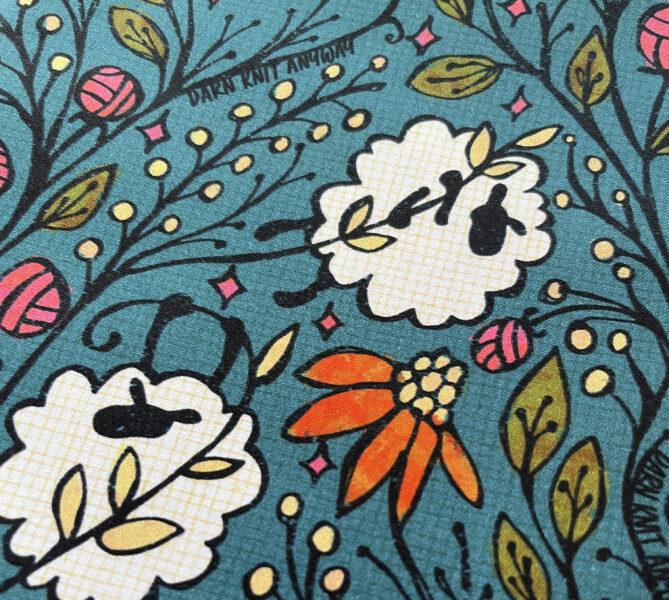
I spent a lot of time coloring and experimenting with placing the colors. I used a Photoshop brush with an impressionist painting effect so that it added some variation to the color as I painted, so nothing was just big blocks of color. I really love to add a lot of rich texture to my designs, so this has two layers of texture over top as well. The pale yellow grid broke up the white blobs of the fluffy sheep and added a linen-like texture to the background. And then there’s a very subtle spatter paint texture over top of the black outlines in the same color as the background. This softens up the lines and gives it a kind of weathered look. Both of those textures were also things I drew or painted and scanned; I have created a library of subtle textures like crinkles, spatters, and linen that that I use often in my work. I ended up using all of the colors from the brand palette because they just worked so well together and because the values were so similar, it makes a kind of unified background that was a great contrast for the sheep. As a last detail I added the words “Darn Knit Anyway” along the edges of the vines in three different places. I love this fun little message hidden in the leaves.
Because they wanted to make some little drawstring project bags with these prints, I also created a coordinating print for the lining. I wanted to do something reminiscent of a ticking stripe and pulled the little twinkle star shape from the main print. I drew more fluffy sheep but instead of swinging from things, I wanted these to look like they were napping and their feet were all tucked under their fluff. My husband said they looked like popcorn, which made me laugh and I think also adds to the playfulness and the whole theme-in-my-head of sheep pretending to be other things. I couldn’t decide which color I liked better so I designed two.
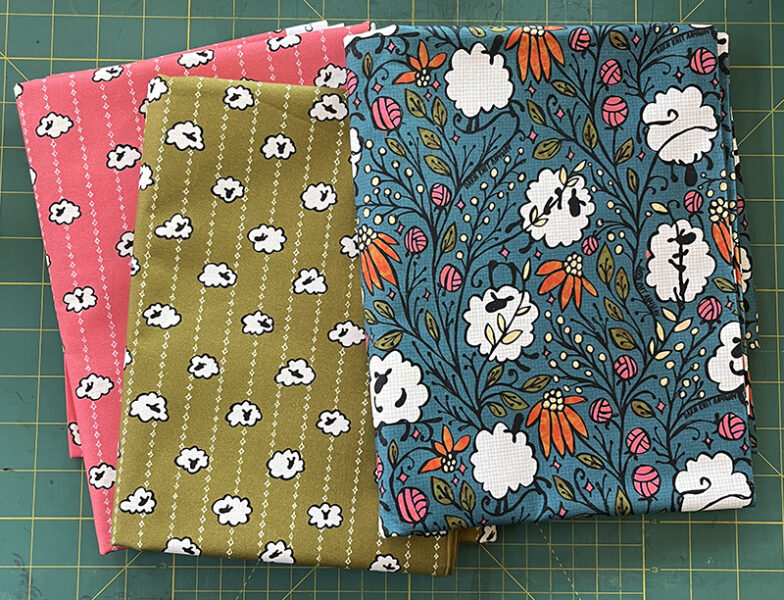
It was great fun to work on this collection and I hope it brings lots of smiles to the community at DKA.










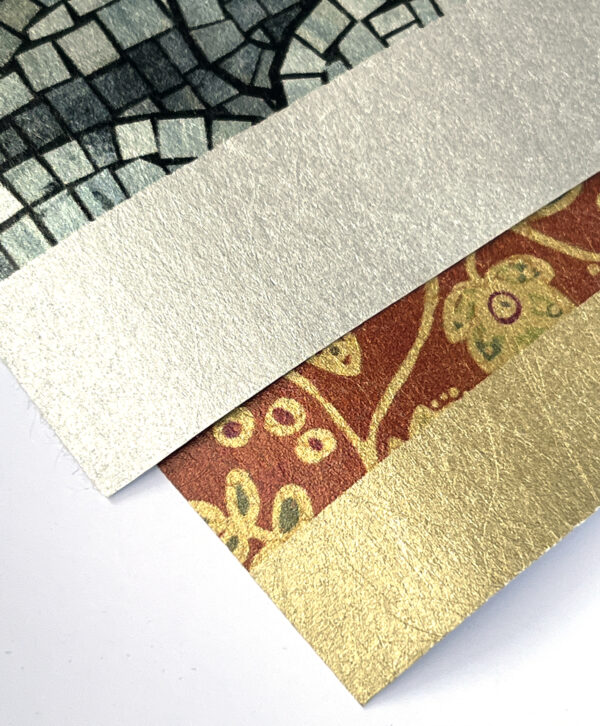 The new Silver and Gold wallpapers are basically identical except for color. Each paper has a base or background color of either silver or gold that your design is printed on top of. The color of the paper shows through any white areas of the design and gives the overall colors of the design a tinted shimmer. You can see the unprinted selvedges of the paper here to get an idea what that base color looks like.
The new Silver and Gold wallpapers are basically identical except for color. Each paper has a base or background color of either silver or gold that your design is printed on top of. The color of the paper shows through any white areas of the design and gives the overall colors of the design a tinted shimmer. You can see the unprinted selvedges of the paper here to get an idea what that base color looks like.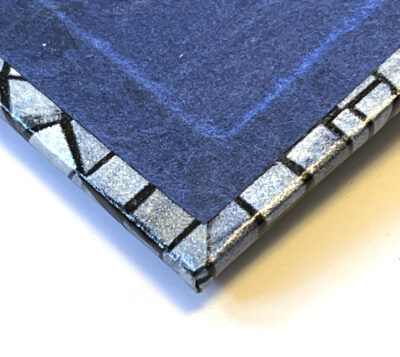 The back side of the paper is a plain white matte paper surface that feels a little like newsprint. Since it’s designed to have glue added to it, it soaked up the PVA I used for the book covers and glued to the cover boards as easy as anything.
The back side of the paper is a plain white matte paper surface that feels a little like newsprint. Since it’s designed to have glue added to it, it soaked up the PVA I used for the book covers and glued to the cover boards as easy as anything.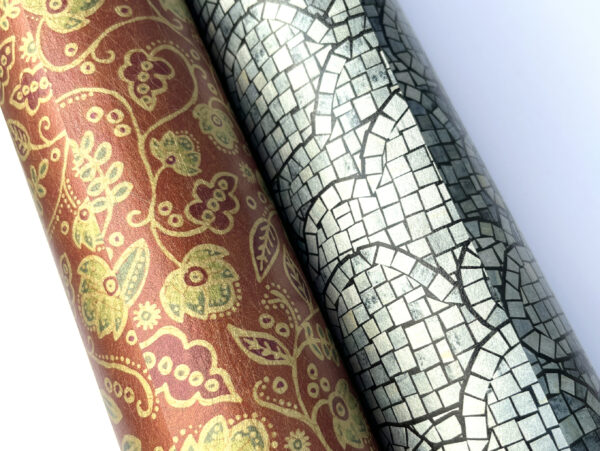 Overall, I can’t say enough good things about this paper! The first thing I did when I finished making these book covers and I was waiting for the glue to dry was order 4 more swatches with different designs. I am planning to make a covered box next.
Overall, I can’t say enough good things about this paper! The first thing I did when I finished making these book covers and I was waiting for the glue to dry was order 4 more swatches with different designs. I am planning to make a covered box next.
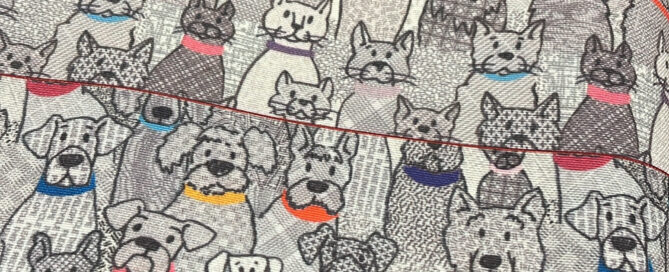
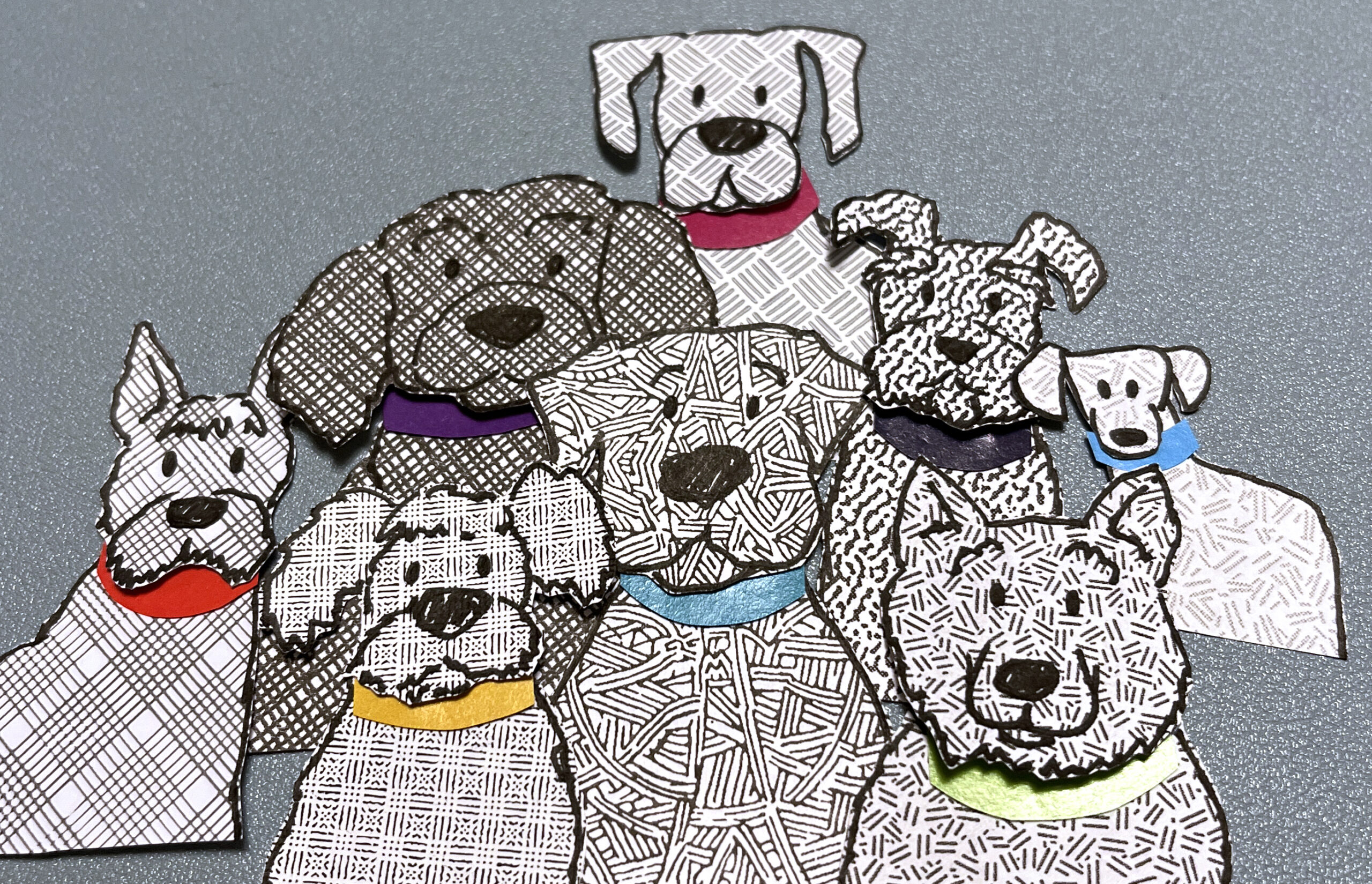
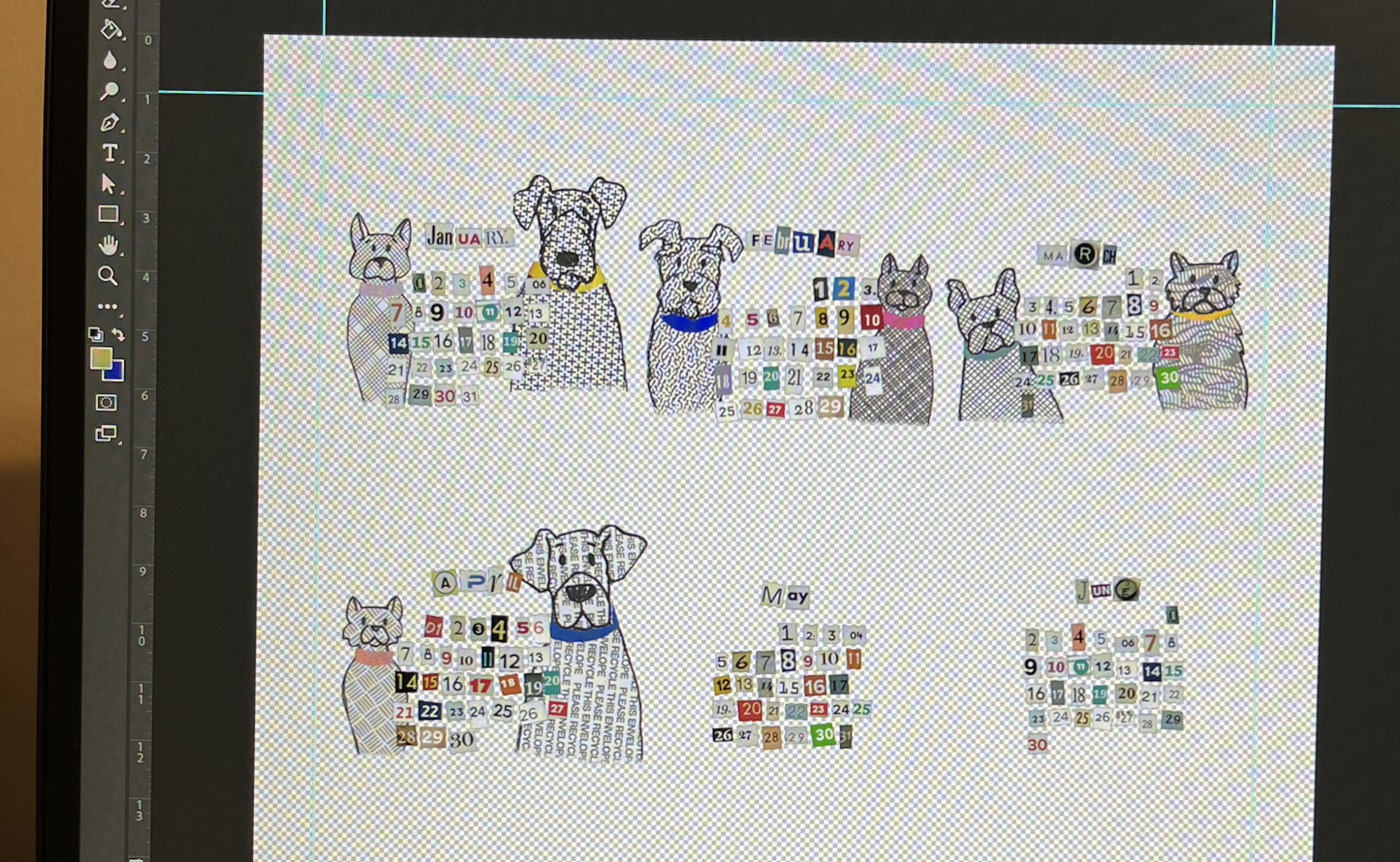
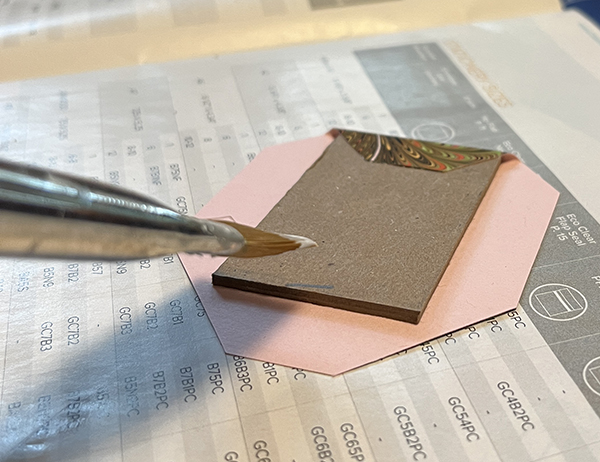
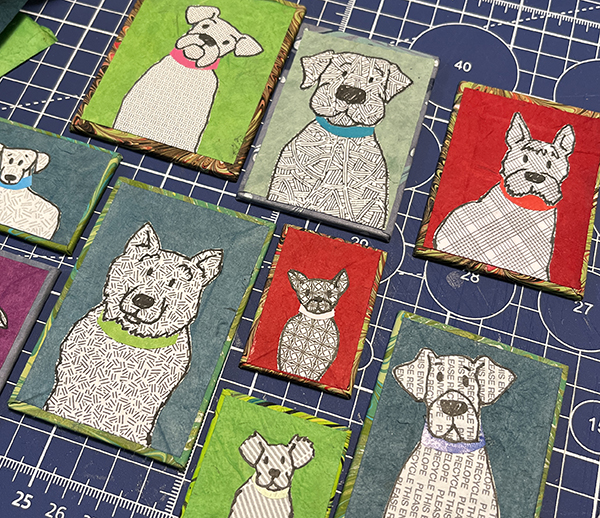
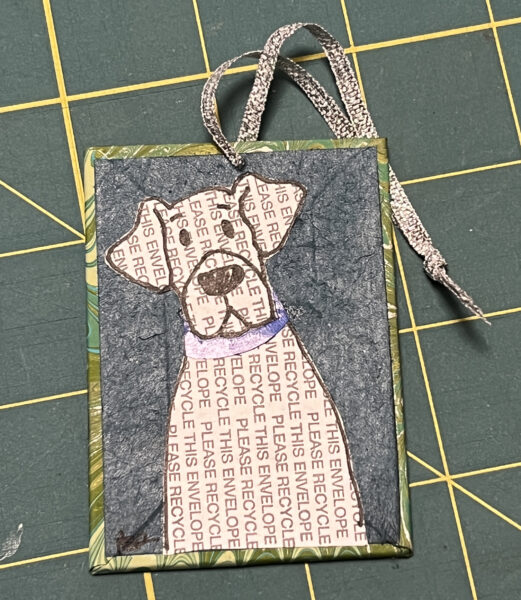 The rest of the ornaments went off to holiday shows at the Northrup King Building and North Suburban Center for the Arts, but I decided that I needed to keep this Stanley for myself. I love this particular security envelope design so much. If you look closely it says “PLEASE RECYCLE THIS ENVELOPE.”
The rest of the ornaments went off to holiday shows at the Northrup King Building and North Suburban Center for the Arts, but I decided that I needed to keep this Stanley for myself. I love this particular security envelope design so much. If you look closely it says “PLEASE RECYCLE THIS ENVELOPE.”